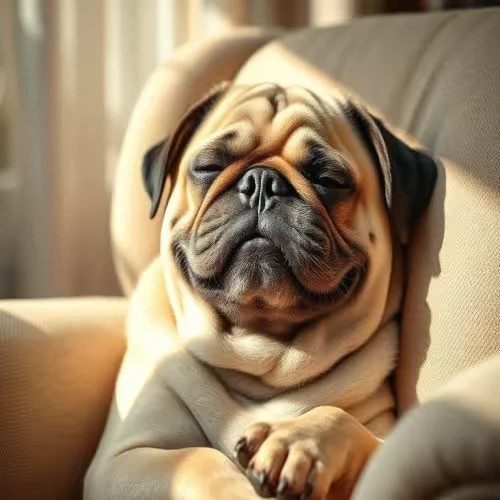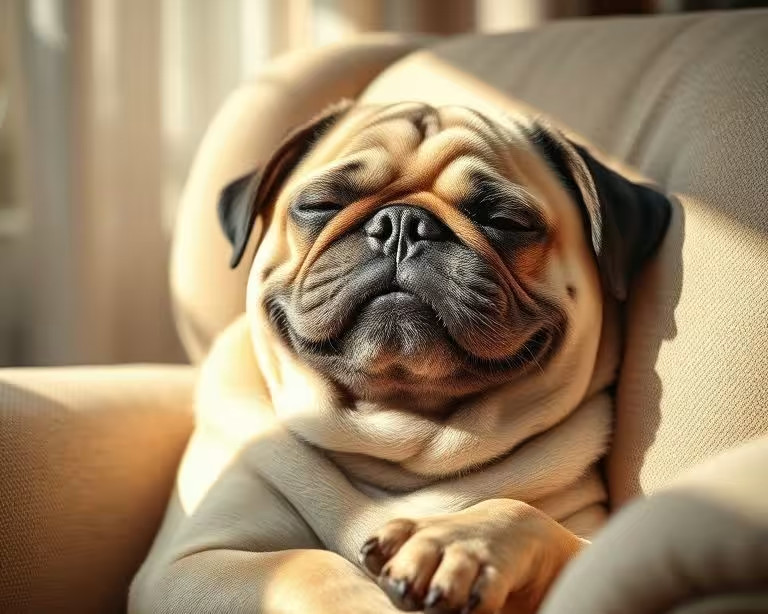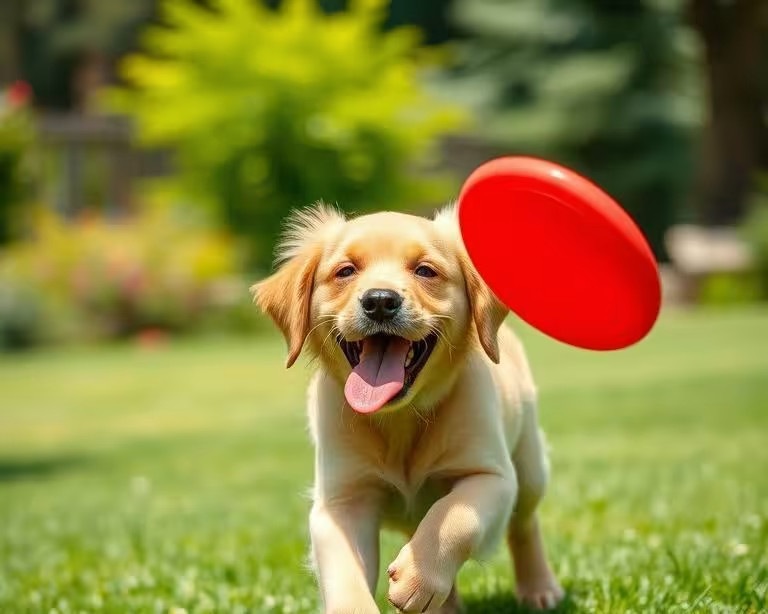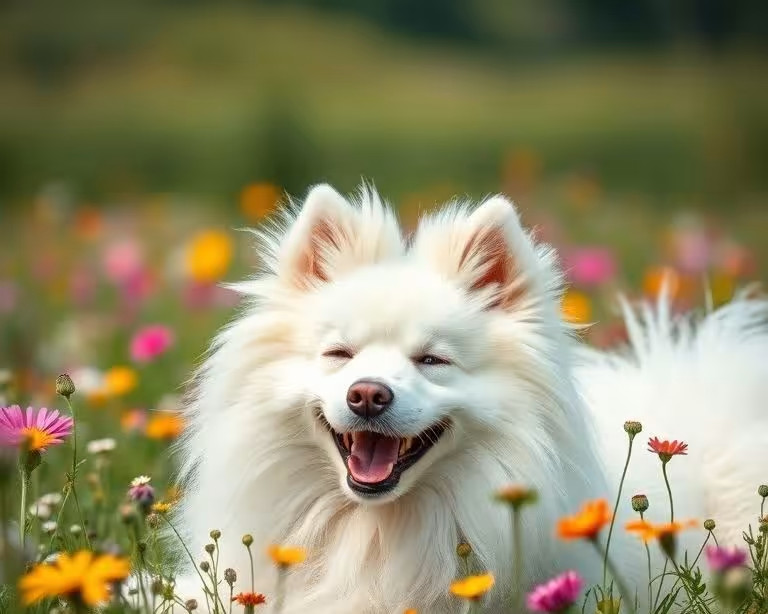Mastering the Dog Bed Cover: Your Expert Guide to Reassembly & Maintenance

Owning a dog means embracing their unique charm, boundless energy, and, inevitably, their messes. A dog bed is more than just a place to sleep; it’s their sanctuary, a comfort zone where they feel safe and secure. However, these beloved resting spots accumulate dirt, dander, hair, and odors, making regular cleaning a non-negotiable part of responsible pet ownership. While washing the cover is straightforward, putting it back on can sometimes feel like a puzzling chore. This comprehensive guide will equip you with the knowledge and techniques to effortlessly reassemble your dog bed cover, ensuring a clean, comfortable, and inviting space for your furry companion every time.
Why Your Dog Bed Needs a Cover (and Regular Cleaning)
A clean dog bed is paramount for both your dog’s health and the overall hygiene of your home. Dog beds are breeding grounds for bacteria, allergens, and even pests if not maintained properly. Regularly washing the cover prevents the buildup of these unwanted elements, contributing to a healthier environment for everyone.
Understanding Your Canine Companion's Hygiene Needs
Dogs, regardless of breed, spend a significant portion of their day sleeping or lounging. During this time, they shed hair, dander, and transfer oils from their coats onto their beds. Outdoor adventures can also bring in dirt, pollen, and even parasites, which can then be deposited onto their sleeping surface. These accumulated contaminants can trigger allergies in both pets and humans, harbor unpleasant odors, and, in severe cases, lead to skin irritations or infections for your dog. Maintaining a clean bed is a simple yet effective way to mitigate these risks.
The Benefits of a Washable Dog Bed Cover
The primary benefit of a dog bed with a removable cover is the ease of cleaning. Instead of attempting to wash an entire bulky bed, you can simply remove the cover and machine wash it. This extends the life of the dog bed itself, as the internal stuffing or foam core is protected and requires less frequent deep cleaning. Furthermore, having a spare cover allows for immediate replacement while one is in the wash, ensuring your dog always has a comfortable spot to rest.

Preparation is Key: Before You Reassemble Your Dog Bed
Before you even think about putting the cover back on, a few preparatory steps can make the process significantly smoother and more effective.
Ensuring the Core is Clean and Dry
Before reassembling, always ensure the inner components of your dog bed—whether it’s foam, fiberfill, or bolsters—are completely dry and free of debris. Any moisture trapped inside can lead to mildew, mold, and unpleasant odors. If the core itself needs cleaning, vacuum it thoroughly to remove loose hair and spot clean any soiled areas with a pet-safe enzymatic cleaner, allowing it to air dry completely before proceeding.
Gathering Your Tools: What You Might Need
While often a hands-on task, a few simple tools can assist, especially with larger or more stubborn covers:
- Lint Roller or Vacuum: To remove any residual pet hair from both the core and the inside of the freshly washed cover.
- Fabric Refresher Spray: For a final touch of freshness, if desired (ensure it's pet-safe).
- A Second Pair of Hands: For very large or heavy beds, an extra person can make the alignment much easier.
- Patience: This is arguably the most important 'tool'!
Identifying Your Dog Bed's Design Type
Dog beds come in a vast array of designs, and understanding yours is crucial for proper reassembly. Common types include:
- Flat/Mat Beds: Often a single foam or fiberfill insert.
- Bolster Beds: Feature raised edges or sides, usually with separate inserts for the bolsters and the central cushion.
- Orthopedic Beds: Typically contain dense foam layers, sometimes multiple pieces.
- Multi-Chamber Beds: Have internal baffles or separate compartments for stability.
Each design may have a slightly different approach to re-covering.
Step-by-Step Guide: How to Put a Zippered Cover Back on Your Dog Bed
Most modern dog beds feature zippered covers for easy removal. This method is the most common and often the trickiest due to the snug fit.
The "Taco" or "Burrito" Method for Larger Beds
For larger beds, the key is to compress the internal cushion. Here’s how:
- Lay the Cover Flat: Open the zipper fully and lay the cover flat on a clean surface, inside out, if that makes it easier to grip the cushion.
- Compress the Cushion: Take the clean, dry bed cushion (or foam insert) and roll it tightly into a 'taco' or 'burrito' shape. For foam, you can gently fold it.
- Insert Halfway: Carefully push the compressed cushion into the cover, guiding it so that one end of the cushion reaches the corresponding end of the cover.
- Unroll/Unfold Gradually: While holding the inserted end in place, gradually unroll or unfold the cushion, working it further into the cover. As it expands, gently pull the cover over the remaining portion of the cushion.
- Adjust and Align: Once fully inside, manipulate the cushion to ensure it fills all corners of the cover evenly. Smooth out any bumps.
- Close the Zipper: Carefully close the zipper, ensuring no fabric gets caught. If it's stiff, gently pull the fabric taut on both sides of the zipper while closing.
Aligning Corners and Edges for a Snug Fit
Achieving a smooth, wrinkle-free fit is essential for comfort and aesthetics. Once the cushion is mostly inside, reach into the cover and pull the corners of the cushion into the corners of the cover. Gently pat and push the sides to align the edges. This prevents lumpy spots and ensures the bed provides even support.
Zipping Up: Tips for Smooth Closure
When zipping, hold the two edges of the fabric directly next to the zipper together as you pull the slider. This reduces tension on the zipper teeth and prevents fabric from getting stuck. If the zipper is stiff, a tiny bit of graphite from a pencil rubbed along the teeth can act as a lubricant, but ensure no excess residue is left for your dog to ingest.
Reattaching Covers with Velcro, Buttons, or Drawstrings
While less common for the main cover, some beds, especially bolster sections or decorative overlays, use other fastening methods.
Precision with Velcro Closures
Velcro closures require careful alignment. Ensure the 'hook' side of the Velcro perfectly matches the 'loop' side. Press firmly along the entire length to secure. Misalignment can lead to gaps or uneven tension, causing the cover to pucker or come undone easily.
Securing Button-Up Covers Without Damage
Button-up covers are often found on more decorative or vintage-style beds. When reattaching, gently push each button through its corresponding buttonhole. Avoid yanking or forcing, which can stretch or tear the fabric around the buttonholes over time. If a button is loose, consider re-sewing it before reassembly.
Tightening Drawstring Covers for a Firm Hold
Drawstring covers are common on round or beanbag-style beds. Once the insert is inside, gather the drawstring opening and pull evenly until the opening is closed snugly around the insert. Tie the drawstring securely in a bow or knot that can be easily undone for the next wash.
Specialized Dog Bed Covers: Orthopedic, Bolster, and Multi-Part Designs
These beds offer superior comfort and support but may have more complex cover reassembly.
Reassembling Multi-Chamber Orthopedic Bed Covers
Orthopedic beds often consist of multiple foam layers (e.g., memory foam, support foam) or even multiple distinct foam pieces within a single cover. The key here is to identify which foam piece goes where. Many covers have internal pockets or dividers for each component. Insert each foam piece into its designated compartment, ensuring proper orientation (e.g., memory foam layer on top). This maintains the bed's therapeutic benefits.
Bolster Beds: Fitting the Rings of Comfort
Bolster beds typically have a central cushion and separate cylindrical or U-shaped bolster inserts. First, re-cover the central cushion using the zippered method. Then, carefully slide the bolster inserts into their respective channels around the perimeter of the main cover. These channels usually have their own zippers or openings. Ensure the bolsters are fully pushed in and evenly distributed to maintain their supportive shape.

Elevated Beds and Their Unique Cover Systems
Elevated dog beds, often made with a mesh or fabric sling stretched over a frame, typically have covers that slide onto the frame, snap into place, or use tension. For these, follow the manufacturer's instructions precisely. They might involve disassembling part of the frame, sliding the cover on, and then reassembling the frame to create tension. Ensure all connections are secure to prevent collapse or sagging.
Troubleshooting Common Dog Bed Cover Reassembly Issues
Even with the right technique, you might encounter a few hurdles. Here's how to overcome them.
When the Cover Seems Too Small (It's Not!)
Often, the cover isn't too small; the cushion just needs more compression. For foam beds, try the 'taco' method again, rolling it tighter. For fiberfill, aggressively push and compress the filling towards the end you're inserting, then gently pull the cover over the rest. Remember, dog bed covers are designed for a snug fit to prevent shifting of the internal components.
Dealing with Stubborn Zippers
A zipper that snags or refuses to move can be frustrating. First, check for any fabric caught in the teeth. Gently pull the fabric away from the zipper line. If it's still stuck, try lubricating the teeth with a tiny amount of bar soap, candle wax, or a pencil lead (graphite). Slowly work the zipper back and forth over the lubricated area. Never force a zipper, as this can lead to permanent damage.
Preventing Wrinkles and Bumps for Maximum Comfort
Wrinkles and bumps are usually a sign of uneven distribution of the bed's internal filling. Once the cover is on, spend a few minutes massaging and patting the bed. For foam beds, push the foam into the corners and flatten the surface. For fiberfill, break up any clumps and distribute the filling evenly. A smooth surface is more comfortable for your dog and looks tidier.
Advanced Tips for Maintaining Your Dog Bed Cover's Longevity
Proper care extends the life of your dog bed cover and keeps it looking new.
Proper Washing Techniques for Different Fabric Types
- Canvas/Oxford: Machine wash cold, gentle cycle. Tumble dry low or air dry to prevent shrinkage and maintain water resistance.
- Microfiber/Plush: Machine wash cold, delicate cycle. Tumble dry low. Avoid fabric softeners which can reduce absorbency.
- Waterproof/Ballistic Nylon: Often wipe clean with a damp cloth. If machine washable, use a gentle cycle with cold water and air dry only to preserve the waterproof coating.
- Always check the care label specific to your bed cover.
Storage Solutions for Spare Covers
If you have multiple covers, store clean, dry spares in a breathable fabric bag or a plastic container with a lid. Add a sachet of baking soda or cedar chips to absorb moisture and deter pests. Store in a cool, dry place away from direct sunlight.
When to Consider a New Dog Bed Cover (or Bed)
Even with the best care, covers wear out. Look for signs like persistent tears, faded colors, degraded waterproof coatings, or irreparable zipper damage. If the internal components are permanently matted, lumpy, or no longer offer support, it's time to replace the entire bed. A worn-out bed compromises your dog's comfort and health.
Dog Bed Cover Materials: A Comparative Analysis for Easier Reassembly & Durability
The material of your dog bed cover significantly impacts its durability, ease of cleaning, and how challenging it is to reassemble. Here's a data-driven comparison of popular options:
Durable Canvas & Oxford Fabric
- Durability Rating: High (8.5/10)
- Water Resistance: Moderate (can be treated for enhanced water repellency)
- Reassembly Ease: Moderate (stiffer fabric requires precise alignment and a bit more effort to pull over the core)
- Maintenance: Machine washable, cold water recommended. Air dry or tumble dry on low to prevent shrinkage and maintain integrity.
- Key Characteristics: Tightly woven, resistant to tearing and abrasion, often hides dirt well.
- Price Point: Mid-range ($20-$50 for a large cover).
- Pros: Excellent for active dogs, good for chewers (to a degree), stands up to frequent washing.
- Cons: Can feel less soft, takes longer to dry, may be less breathable than other options.
Soft Microfiber & Plush Fabrics
- Durability Rating: Moderate (6/10)
- Water Resistance: Low (highly absorbent, prone to staining)
- Reassembly Ease: High (very flexible, drapes easily over the bed core, accommodating minor misalignments)
- Maintenance: Machine washable, gentle cycle with cold water. Tumble dry on low; avoid high heat.
- Key Characteristics: Luxuriously soft, often high-pile, provides warmth.
- Price Point: Mid-range ($25-$60 for a large cover).
- Pros: Ultra-comfortable for sensitive or elderly dogs, inviting texture, creates a cozy environment.
- Cons: Attracts and traps pet hair, prone to staining, less durable against persistent chewing or scratching, can become matted over time.
Waterproof & Chew-Resistant Materials (e.g., Ballistic Nylon, Vinyl-backed fabrics)
- Durability Rating: Very High (9/10 for tear/chew resistance)
- Water Resistance: High (often 100% waterproof or highly water-repellent)
- Reassembly Ease: Moderate to Low (less flexible than plush, can be stiff or slick, requiring more careful manipulation to avoid air pockets and ensure a smooth fit)
- Maintenance: Most are wipe-clean. If machine washable, use cold water, gentle cycle, and always air dry to protect the waterproof coating.
- Key Characteristics: Extremely tough, smooth or textured surface, designed to resist punctures and liquids.
- Price Point: Higher ($35-$80+ for a large cover).
- Pros: Ideal for incontinent dogs, outdoor use, or heavy chewers. Easy to sanitize, prevents odors from permeating the bed core.
- Cons: Can be less breathable, may feel less soft or cozy to some dogs, can be noisy, reassembly can be more challenging due to material stiffness.

The Impact of a Well-Maintained Bed on Your Dog's Well-being
Beyond cleanliness, a properly maintained and reassembled dog bed has a direct positive impact on your dog's physical and mental health. It's about providing a consistent, healthy, and inviting space.
Ensuring a Comfortable Resting Place
A lumpy, twisted, or ill-fitting cover can diminish the comfort and ergonomic support of an otherwise excellent bed. For orthopedic beds, proper cover reassembly ensures the foam layers are aligned to provide the intended joint support. A smooth, even surface prevents pressure points and encourages deeper, more restorative sleep, which is crucial for a dog's overall health and mood.
Reducing Allergens and Pests
Regular washing and meticulous reassembly significantly reduce the presence of dust mites, dander, pollen, and other allergens that can irritate your dog's skin and respiratory system. For outdoor dogs, it also helps prevent the transfer of fleas and ticks into your home, as any hitchhikers are removed during the wash cycle. A clean bed is a key component in a comprehensive pest control strategy.

Frequently Asked Questions (FAQ) About Dog Bed Covers
How often should I wash my dog bed cover?
The frequency depends on your dog's lifestyle and any allergies. For average indoor dogs, washing every 2-4 weeks is generally sufficient. For dogs with allergies, skin conditions, or those that spend a lot of time outdoors, weekly washing might be necessary. Puppies and senior dogs prone to accidents also benefit from more frequent cleaning.
Can I machine wash all dog bed covers?
Most modern dog bed covers are designed to be machine washable. However, it's crucial to always check the care label provided by the manufacturer. Some specialized materials, like certain waterproof coatings or delicate plush fabrics, may require hand washing or specific cold/gentle cycles and air drying.
My dog bed cover shrank after washing; what can I do?
Shrinkage usually occurs due to hot water or high heat drying. Unfortunately, reversing significant shrinkage is difficult. To prevent it, always wash with cold water and air dry or tumble dry on the lowest heat setting. If it has slightly shrunk, you might try stretching it gently while still damp, but major shrinkage typically means the cover may no longer fit correctly.
How do I remove dog hair from the cover before washing?
Before washing, use a lint roller, a rubber brush, or even a damp rubber glove to rub off as much dog hair as possible. Running the cover through a quick tumble dry cycle (without heat) can also loosen hair, which can then be collected from the lint trap. Removing excess hair prevents it from clogging your washing machine and ensures a cleaner wash.
What's the best way to dry a dog bed cover to prevent shrinkage?
The best method is to air dry the cover completely, either by hanging it on a clothesline or laying it flat. If using a dryer, opt for the 'air fluff' or 'no heat' setting. If some heat is necessary, use the lowest temperature setting possible and remove the cover while it's still slightly damp to allow it to finish air-drying.
Should I use fabric softener on dog bed covers?
It's generally not recommended to use fabric softener on dog bed covers. Fabric softeners can leave a residue that might irritate your dog's sensitive skin or respiratory system. They can also reduce the absorbency of certain fabrics and potentially compromise waterproof coatings. For softness, choose a cover made from naturally soft materials and use a gentle detergent.
How do I store a dog bed when not in use?
If you need to store a dog bed, ensure both the cover and the inner core are completely clean and dry to prevent mold or mildew. Compress the bed as much as possible and store it in an airtight container or a vacuum-seal bag. Add a desiccant packet (like silica gel) to absorb any residual moisture. Store in a climate-controlled area to prevent damage from extreme temperatures.
Are replacement covers readily available?
For popular dog bed brands, replacement covers are often available for purchase directly from the manufacturer or through pet supply retailers. This is a cost-effective way to extend the life of your dog bed if the core is still in good condition but the cover is worn or damaged. Always ensure you purchase the correct size and model for your specific bed.
What is the benefit of a separate dog bed cover?
The main benefit is hygiene and longevity. A separate, removable cover allows for easy and frequent washing, keeping your dog's sleeping environment clean without having to wash the entire bulky bed. It protects the inner components from dirt, odors, and wear, significantly extending the bed's lifespan and maintaining its comfort and support features.
How do I choose the right size cover for my dog bed?
Measure your dog's current bed inserts (length, width, and thickness for foam beds; diameter for round beds). Compare these measurements to the cover's specifications. It's crucial to get a cover that matches the exact dimensions of your bed's core to ensure a snug, wrinkle-free fit and proper support for your dog.
Conclusion: A Clean Bed, A Happy Dog, A Happier You
Mastering the reassembly of your dog bed cover is a small but significant skill in responsible pet ownership. It contributes directly to your dog's health, comfort, and overall well-being, while also keeping your home cleaner and fresher. By following these detailed steps, understanding different bed types, and employing a bit of patience, you can transform a once-daunting task into a simple routine. A clean, perfectly fitted dog bed is a testament to the love and care you provide, ensuring your cherished companion always has the most welcoming spot to dream of chasing squirrels and enjoying endless belly rubs.

 By
By
There's nothing quite like seeing my old boy, Max, snuggled up in his freshly cleaned bed. He has sensitive skin, and keeping his bed free of allergens, as this article emphasizes, has made such a difference in his comfort. This guide helps me ensure he always has that clean, safe space.